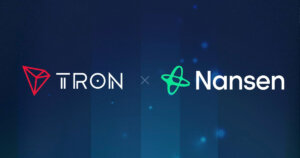Australian Bank Utilizes Ethereum for Cross-Border Shipments
Photo by Leio McLaren on Unsplash
A 17-ton, cross-border container of almonds was successfully transported from Australia to Germany utilizing the Ethereum blockchain, in a collaborative move between Commonwealth Bank of Australia (CBA) and five logistics organizations.
Augmenting Shipping Systems
The development represented one of the first instances of a state-backed shipment facilitating using blockchain technology. Apart from the growing technology, the indigenous platform was underpinned by smart contracts and an internet-of-things (IoT) protocol, as stated in the CBA’s official post.
The logistical trial served as a litmus test to prove a blockchain-based, global trade platform that builds an agile, efficient, and transparent shipping industry. Apart from eliminating intermediaries, bank authorities believe the platform reduces paperwork and legal formalities for businesses, making the shipping process significantly faster.
Closely representing a worldwide computer network, the platform’s nodes were present at each logistical checkpoint, including the Ports of Brisbane and Melbourne, the Pacific National train connection, shipping carrier OOCL Limited, and almond supplier Olam Orchards. Australia-based LX Group provided the IoT devices required for the route.
Three distinct components of the supply chain process were digitized – legal documentation, operations, and finance. The CBA fulfilled this by housing all essential shipping information, task completion reports, and licenses on a private blockchain.
Transparency and Efficiency
All participants were able to view shipment information in real time, such as location, container temperature and humidity, and authentication of transported goods. A total of four IoT-enabled devices were placed inside the container to relay the mentioned information to participant nodes.
Emma Roberts of Olam Orchards expressed her appreciation for the technological advancement:
“Trade inefficiency can be extremely detrimental to our business. It is vital that as an industry, we look at emerging technology for ways to enhance the supply chain to develop a more transparent and efficient platform.”
The use of blockchain at the documentation level allowed participants to access and upload required documents, including customs receipts, certificates of origin, and bill of lading.
Issues in the Shipping Industry
The global supply chain industry has become more complicated in recent years after the advent of globalization. However, Gerhard Ziems of Pacific National, the shipping participant, notes the use of blockchain helps to “reimagine how the supply chain communicates” and relays sensitive information.
For Ziems, knowing the data is valuable for business operations, as firms can devote resources and assets where most required and improve services for both businesses and customers. The company was able to pinpoint and explore additional datasets in the shipping process, which will subsequently help with planning inventory and shipping management.
CBA’s Blockchain Push
For the CBA, the project marks another successful completion of a blockchain-based venture. The bank has explored and experimented with the technology since 2016, which is reflective of the positive stance Australia holds towards digital assets and distributed ledger technologies.
CBA partnered with U.S. institutional bank Well Fargo in 2016 to conduct an experiment that merged traditional finance with blockchain technology. The project saw the shipping of a cotton container from the U.S. to China using the blockchain.
At the time, the relatively simple system made the location tracker available to all system participants, and automatically processed payment after the container reached the Chinese port of Qingdao.
Meanwhile, the CBA appraised the Ethereum blockchain. The bank stated:
“Ethereum currently has the most development activity globally, and offers the functionality we require. However other blockchains are developing rapidly and [we] remain open to other options in the future.”
Founded in 2015 by a group of Bitcoin enthusiasts, Ethereum remains a favorite for developing platform applications and other cryptocurrencies. Few investors remain cautious of its use case considering its $46.5 billion valuation, a severe case of over-inflation, as reported by CryptoSlate.



 Farside Investors
Farside Investors 


 CoinGlass
CoinGlass 































































































